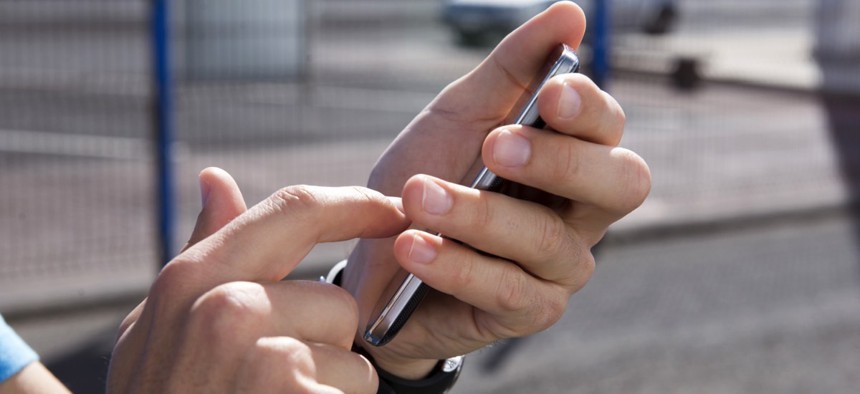How States Can Improve Citizen Experience Through Service Delivery

ljubaphoto / Shutterstock.com
How services are delivered often matters more than the services themselves.
A recent McKinsey survey of 17,000 citizens across 15 states revealed that citizens are often dissatisfied with services delivered by state government.
Though the types of services—medical care, housing supplements, education, and the like—varied, citizen dissatisfaction often stemmed from how state services are delivered, rather than the services themselves.
Fortunately, state agencies can look to their federal counterparts for guidance in improving citizen experience.
Several federal agencies are leading the way in transforming the citizen journey. These agencies have recognized the value in creating online channels for certain services, such as shipping packages and buying postage online, and have preserved contact and walk-in centers for instances when citizen touchpoints are more complex and demand greater interaction, such as investigating healthcare plan options.
Perhaps most important, they have learned that "one size does not fit all"—that every citizen brings a unique experience to an agency and will feel most comfortable interacting with an agency in a specific way.
To best serve citizens, agencies need to meet them at their comfort levels and build communication from there.
Before agencies can even think about changing the way they communicate, they need to take a hard look at where they stand internally. What is the driving force that brings their employees to work every day?
Agency leaders must develop and communicate an overarching vision and goals. Transforming an agency can only take place when every single person at the agency has a common goal, preferably one focused on improving the quality of customer service to citizens.
While agency leaders must be committed to the agency's new vision and goals, executing changes to ensure that they happen cannot be a result of a top-down declaration, and it absolutely cannot come from a "compliance mentality," where service providers feel they must change because they are told to. True agency transformation can only occur when team members believe that they are part of the change and that they are making a difference to the citizen.
Once agencies are committed to transforming themselves to put citizens first, leaders must examine which channels are currently serving citizens well and which are underperforming.
Whether agencies are implementing or fine-tuning their use of digital channels, they need to make sure their presence, on or offline, is the same to citizens. It shouldn't matter whether citizens call into the Department of Treasury or search for information on its website; the answers they find should be identical.
Before agencies rush to create and utilize social media profiles, they should keep in mind that according to a recent Forrester Research report, “using postal mail or a phone to interact with agencies was much more popular than Facebook, mobile apps or Twitter, with the latter only hovering at about two percent."
It's difficult to imagine the challenges associated with renewing a driver's license via Facebook or Twitter. But state DMVs have come a long way in moving license renewal processes online, reserving in-person citizen experiences for more complicated transactions, such as transferring vehicle titles.
Additionally, agencies should collect and examine citizen touchpoint data to make informed decisions about channels. In general, matching channels to use cases is good practice. For example, are city and county courts receiving calls for information, like marriage license requirements, which could easily be posted online? Are citizens calling for that information because they can't easily find it on the agency's website? That’s a quick and easy fix that can reduce call volumes in the contact center, reduce the cost of service for the agency and immediately increase citizen experience.
Conversely, digital channels aren't always the best fit for certain citizen touchpoints. Agencies should look into instances in which traditional channels serve individuals in ways that digital channels simply cannot. For instance, citizens may have complex or personal issues that are sensitive or difficult to type into a web form, particularly when it comes to medical assistance needs.
One of the most important ways agencies can build positivity into the citizen journey is to integrate citizen communication channels. A Gartner report titled, "Magic Quadrant for Contact Center Infrastructure" found that 77 percent of citizens use more than one channel when seeking service.
Some agencies are delivering a multi-channel service experience, but not necessarily an omnichannel experience. If citizens begin an interaction with an agency, such as the State Department online, they expect all of that background to carry over to an in-person interaction.
Having to tell a story more than once wastes valuable time—for citizens and for agency representatives. If agencies implement digital channels without integrating them into a larger omnichannel engagement strategy, they risk losing any goodwill they’ve built up by showing citizens that they understand and appreciate the complexity of their concerns.
The real challenge facing service organizations at the state and federal level is providing a consistent experience across all channels. The only way to attain seamlessness and consistency is to address the citizen experience in total and examine all the touchpoints together as part of a citizen's journey. By focusing on citizens and their journey to complete a task, the interaction with an organization can feel a lot more personal and be much more effective.
Abby Herriman is senior vice president of delivery and innovation at HighPoint Global.
NEXT STORY: It’s Tax Season, and States Are Battling Bogus Requests for Refunds





